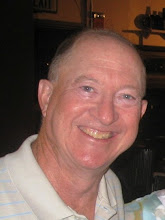While in the hospital during the last few days, I was visited by several physicians to discuss my follow-up care. The standard treatment regime involves focused beam radiation through the skull aimed at remaining tumor with simultaneous, daily, administration of an oral, chemotherapy drug, Temodar. The radiation is administered 5 days/week at an approved location and the Temodar is taken at home along with an ant-emetic agent, 7 days/week in the evenings.
Before my release on December 2, the doctors at Lee County Memorial were strongly encouraging me to begin planning for treatments in Fort Myers. I met both a clinical oncologist, Dr. Silvia A. Romero and a radiation oncologist, Dr. Alan Brown (21st Century Oncology, Ft. Myers), before my hospital release. Dr. Brown was anxious for me to begin the “mapping” of my head and beginning and making the radiation plan while Dr. Romero wanted to get the Temodar ordered for me because it can take some time. But, I wasn’t sure that I wanted to be treated in Florida.
Even with this standard treatment regime, the two year survival is very low with GBM. I’m a drug researcher and a fighter and our family is fortunate enough to have the means and the wherewithal to seek out and find alternative treatment regimes. I really wanted to get into some kind of clinical trial where my chances might be better. So, after my release from the hospital, I put off making the visits to the local treatment centers in Florida and began doing research on my own and through my Lilly colleagues.
At the present time, probably the most famous brain tumor research group in the country is located at Duke University in North Carolina, where Ted Kennedy has been treated. They are doing some cutting edge stuff, including immunotherapy protocols. The group is headed up by Dr. Henry Friedman at The Preston Robert Tisch Brain Tumor Center in Durham. A former colleague at Lilly (George Sandusky) filled me in on the details here. He advised me to call Friedman directly and I did. I had a personal conversation with Friedman that same afternoon, describing my situation. He agreed to look at my case, but only after receiving post-surgical MRI scan data. My Florida surgeon would not do this for me until the staples were to be removed from my head on December 19. So, there would be a hold-up with no guarantee for acceptance by Duke. I began looking for alternatives that would allow us to move faster to begin treatments.
The next two options were University of California at San Diego and the University of Chicago Medical Center where an interesting clinical trial was still open to enrollment. As my research continued, I made my first contacts from Florida to the staff in Chicago on December 11, 2008 via an email message.
Before my release on December 2, the doctors at Lee County Memorial were strongly encouraging me to begin planning for treatments in Fort Myers. I met both a clinical oncologist, Dr. Silvia A. Romero and a radiation oncologist, Dr. Alan Brown (21st Century Oncology, Ft. Myers), before my hospital release. Dr. Brown was anxious for me to begin the “mapping” of my head and beginning and making the radiation plan while Dr. Romero wanted to get the Temodar ordered for me because it can take some time. But, I wasn’t sure that I wanted to be treated in Florida.
Even with this standard treatment regime, the two year survival is very low with GBM. I’m a drug researcher and a fighter and our family is fortunate enough to have the means and the wherewithal to seek out and find alternative treatment regimes. I really wanted to get into some kind of clinical trial where my chances might be better. So, after my release from the hospital, I put off making the visits to the local treatment centers in Florida and began doing research on my own and through my Lilly colleagues.
At the present time, probably the most famous brain tumor research group in the country is located at Duke University in North Carolina, where Ted Kennedy has been treated. They are doing some cutting edge stuff, including immunotherapy protocols. The group is headed up by Dr. Henry Friedman at The Preston Robert Tisch Brain Tumor Center in Durham. A former colleague at Lilly (George Sandusky) filled me in on the details here. He advised me to call Friedman directly and I did. I had a personal conversation with Friedman that same afternoon, describing my situation. He agreed to look at my case, but only after receiving post-surgical MRI scan data. My Florida surgeon would not do this for me until the staples were to be removed from my head on December 19. So, there would be a hold-up with no guarantee for acceptance by Duke. I began looking for alternatives that would allow us to move faster to begin treatments.
The next two options were University of California at San Diego and the University of Chicago Medical Center where an interesting clinical trial was still open to enrollment. As my research continued, I made my first contacts from Florida to the staff in Chicago on December 11, 2008 via an email message.


No comments:
Post a Comment